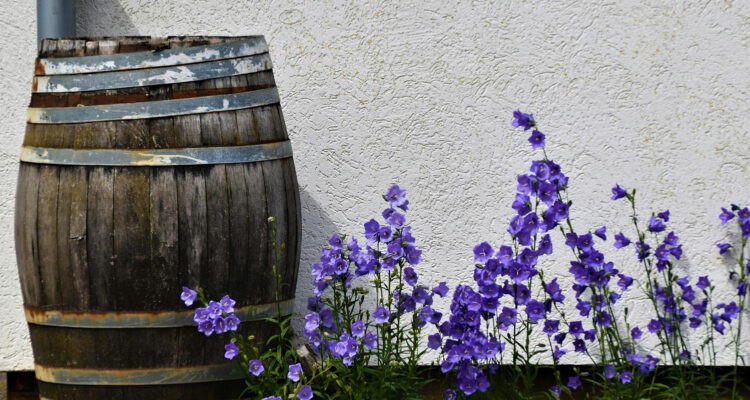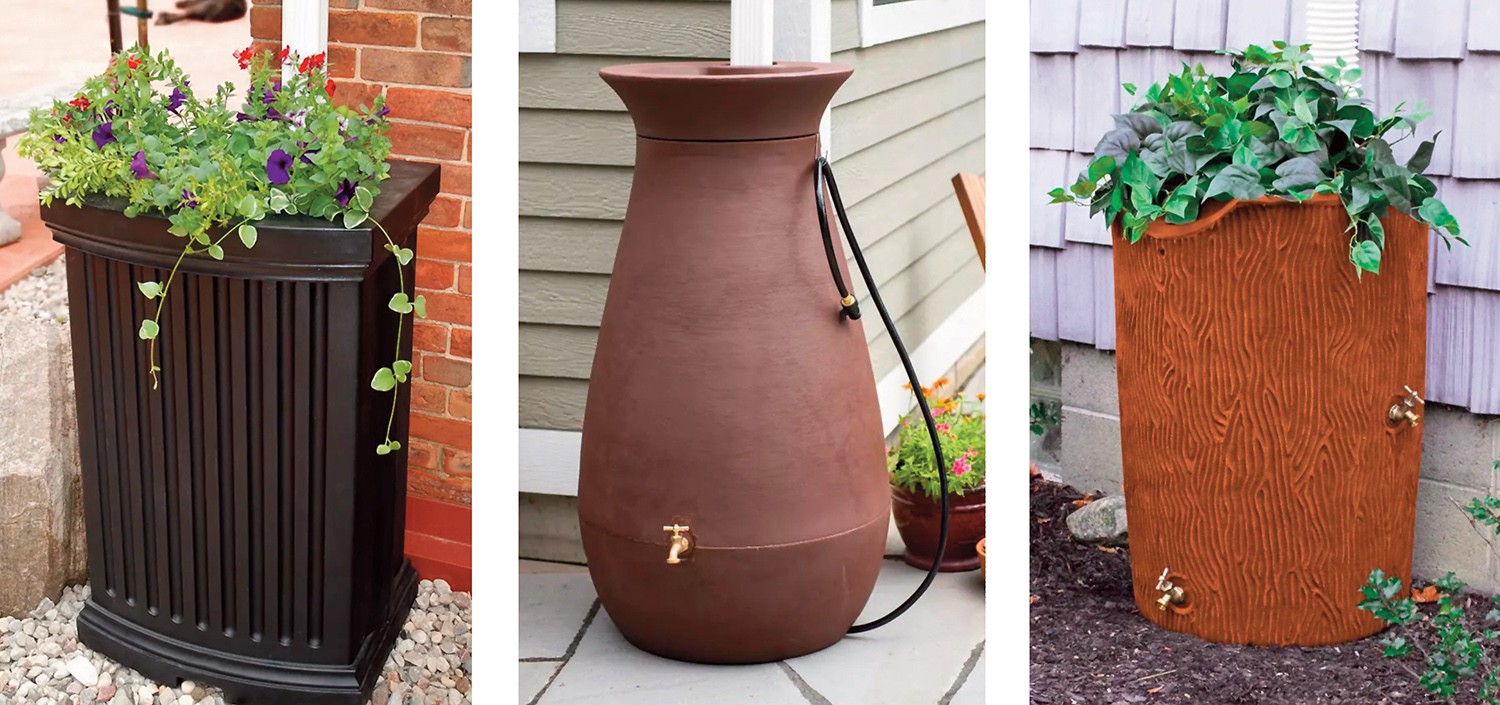Discover some sustainable solutions for eco-conscious gardeners with the use of rain barrels.
Story by Ann Butenas
In today’s world of sustainability and eco-conscious living, the use of rain barrels has become a popular practice for homeowners looking to conserve water and reduce their environmental impact. These simple yet effective devices not only offer numerous benefits, such as reducing water bills, preventing soil erosion, and providing chemical-free water for plants, but they also provide an easy way to collect and utilize rainwater for gardening, landscaping, and other outdoor needs.
We chatted with Jeffrey Preuss, Landscape Architect and owner of Jeffrey Preuss Landscapes in Kansas City, to learn more about rain barrels and their application, exploring the advantages of using rain barrels, the best location for placement, style and design importance, tips for maintenance, common misconceptions surrounding these eco-friendly water conservation tools, and how they can be integrated into landscaping projects to enhance sustainability and water efficiency.
Inset photos courtesy of Gardener’s Supply Company
KCH&S: What are the main benefits of using a rain barrel?
Preuss Landscapes: In Kansas City, rainwater is pH neutral, making it desirable for most plants as it lacks chlorine and other chemicals typically found in public water systems.
KCH&S: Does the style or design of a rain barrel matter, or is it just about functionality?
Preuss Landscapes: When considering aesthetics, homeowners have various options for their rain barrel: they can paint it to match the house and blend it into the garden, use a fence for camouflage, or make it a garden focal point by incorporating unique design features that spark conversation.
KCH&S: Where is the best location to place a rain barrel for optimal water collection?
Preuss Landscapes: Placing the barrel in a shady location helps reduce the amount of sunlight reaching the rain barrel, effectively preventing the growth of algae inside the barrel.
KCH&S: How can homeowners effectively maintain and clean their rain barrels?
Preuss Landscapes: To prevent algae growth, it is recommended to scrub the rain barrel with bleach on an annual basis, regardless of the location where it is placed.
KCH&S: How can rain barrels be integrated into landscaping projects to enhance sustainability and water efficiency?
Preuss Landscapes: Connecting multiple rain barrels enables gardeners to store substantial quantities of high-quality water over extended periods without the need for additional energy inputs, resulting in time and cost savings.
KCH&S: What are some common misconceptions about using rain barrels, and how can they be addressed?
Preuss Landscapes: It is important to consider the weight of a water barrel to prevent tipping, ensuring it is placed on a flat surface; if the appearance is a concern, options include incorporating a decorative wood structure, concealing it with landscaping, or painting it to match the house’s color scheme.







